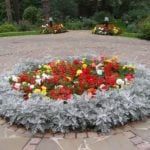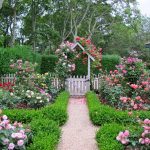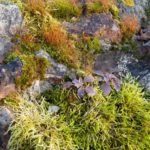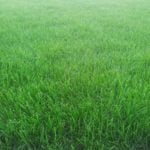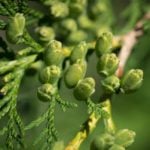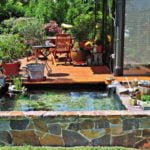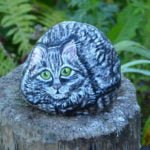Dry creek one of the most striking and original elements of landscape design, which can be done independently, with minimal time, effort and money. The benefits of a dry stream is simply huge and undeniable, it will serve as a wonderful decoration of any garden plot, visually increasing its area and hiding the defects of the relief. Just look at this dry creek.

Equipped by all the rules, it gives the impression of the present-created by mother nature, is not it? It seems as if only recently crystal clear water flowed here and just a few days ago it dried up. The impression is that a tiny rain, and dry Creek again come to life, back to life, generously filled with life-giving moisture. But even without water it has a very calming effect on people, I would say — magically.
Coming to us from the land of the rising sun, the dry creek is one of the main elements of the rocky garden, is a symbol of water, meaning continuous movement. The fact is that in the East, water, or, its imitation must necessarily be in the garden, without it its design is considered incomplete.
Advantages of dry creek
Dry creek will fit perfectly into the design of any garden, not only highlighting the landscape, but also successfully complementing it. In addition, it will perfectly perform the role of a drainage groove, requiring much less money, effort and labor than the device of this brook. Another, just a huge advantage is that, unlike ordinary streams and ponds, dry creek can be arranged anywhere: on elevations and depressions, in the shade and in the sun — choose yourself.
It is possible to construct an artificial streamlet and effectively it to issue in only a few days – during this time you will be able to choose the place for the device of the stream, to designate the channel and accurately to fill it with in advance chosen stones. Another day you have to spend on planting plants around the makeshift pond. At the same time, the usual pond will require you a lot of effort lowering the terrain, leveling the landscape, deepening the channel… Agree, to perform all these manipulations on their own is quite difficult, and therefore have to use the services of landscape designers or, in extreme cases, ordinary workers. And this again involves unnecessary time and financial costs.

Another undeniable advantage of dry creek is the ease of care: it does not need to change the water, put a variety of pumps, compressors and filters to prevent water stagnation. There is no need to construct a complex system of water supply and purification, to acquire a special expensive film to lay the bottom. It will never have seaweed, delivering a lot of trouble to the owners of reservoirs, and the water itself will never exude an unpleasant smell, which, believe me, is not uncommon in artificial reservoirs.
Finally, no one will limit the choice of plants in order to arrange a dry creek: irises and hosts, miscanthus and tracheophyta, while for planting near the pond you can buy only water-loving flowers.

Dry creek is a universal, you can even say a unique element of landscape design. You can make it not only in the form of an ordinary creek, but also a dry lake.

No less beautiful artificial creek will turn out if its bed is laid out of rubble, and the banks to issue large stones

You can build a spectacular dry creek not only from stones, but also from flowers. The ideal option in this case is the campanula poscharskyana, flowers which have a unique dark blue color, so successfully mimic the flow of water.

The surface of the dry creek can be laid out with blue pebbles and gravel or, for example, decorate with small glass blue granules, in General, fantasize and realize your fantasies.
Dry creek with his hands
Independently build a dry creek is easy enough, it will only have a little work. But first you need to decide on the shape and size of the future “pond”, the place for its device and materials for construction.
Choosing the size and shape, consider not only the relief of your garden plot, but also its area. For example, a dry lake will look great on a long and narrow area, and a winding creek — on the contrary, on a short and wide, visually extending it and thereby deepening the space as much as possible.

Remember that, like any other creek, a dry creek must have a mouth and a source. The mouth will mimic the confluence of the stream in another “pond”; you can hide it behind a fence or large leaves bergenia, canna, hosts and any other plants. The source also better positioned on a small hill, to his more expressive labeling. With stones lay out a small circular recess, resembling a well: so you create the illusion of a source of water. It looks very nice when the stream “comes out” of the rock. To simulate this, it is necessary to build a hill of large stones.
The most popular materials for the construction of dry creek: pebbles, ideal for simulating the water surface, and fine gravel; they are sold in all construction shops. In addition to the cheapness of these materials, their undeniable advantage is a variety of colors: pebbles often light colors — gray-blue and gray, but gravel can be blue, blue-green, blue and so on… Except gravel and pebbles, successfully use basalt and slate, they also have a gray-blue color.

You can place accents in the composition with the help of large stones and colored granite, which are also sold in numerous construction shops. Very impressive will look glass granules and balls of blue-blue flowers, which will create the effect of living water, provocatively sparkling in the sun and gently shimmering on cloudy days.
Having determined the location and material, you can start marking the site for the future dry creek. It is best suited for this ordinary sand, with which we outline the contours of the future “reservoir”. You can change them an infinite number of times until you get the perfect, in your opinion, form.
Having determined the size and shape, begin to prepare the surface, removing all the turf and levelling the rake the ground. As a result, in the place where the dry creek will be located, the soil will be lower than the soil around, about 10-15 centimeters. With the deepening also not to overdo it too concave brook is unrealistic, remember that.
Then on the area of the supposed “channel” it is necessary to pour enough dense layer of sand in the thickness of 3-5 centimeters and to lay any covering material thanks to which weeds will not germinate on a surface.
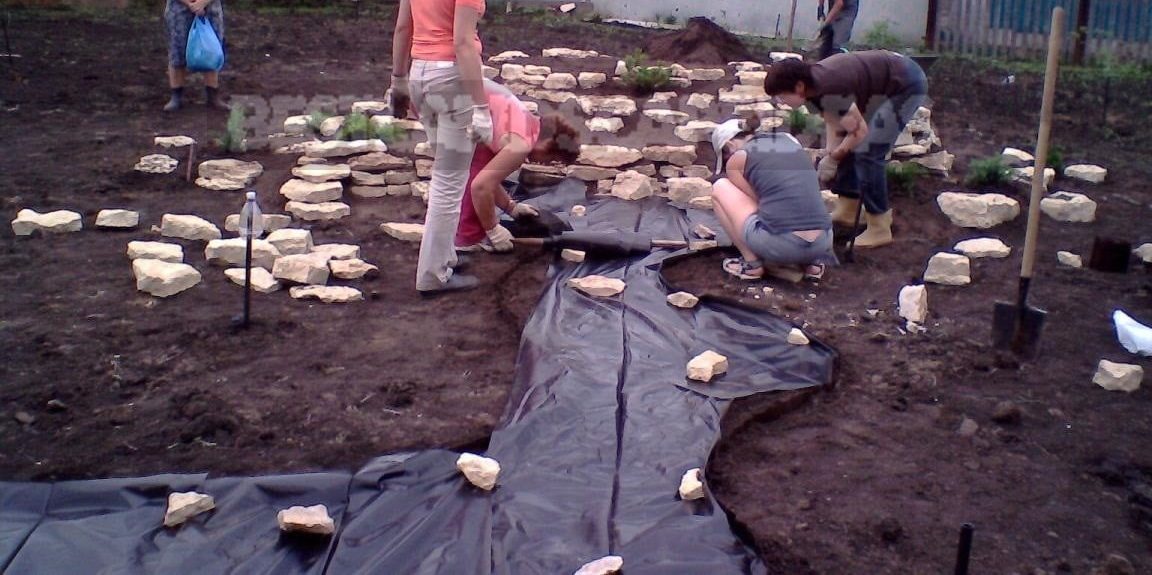
The ideal material is a polymer film or geotextile, but if they are not at your disposal, you can use a cheaper, similar in structure and namely construction.
Once the base is ready, lay the largest stones, delineating their boundaries creek, and smaller rubble or pebbles lined his bed.
Having successfully completed the construction of dry creek, you can plant plants around it.

Try not to overdo it with tall plants — their excessive number only “overload” the shore, in the end your creek will turn into an ordinary flower bed.
Although, in principle, in the choice of plants, as I wrote above, you are not limited. Try only to choose those that are associated with water — have blue flowers or blue-yellow leaves: hemerocallis, cortaderia selloana, lobelia, ajuga reptans, festuca glauca.
Effectively decorate creek can not only with the help of vegetation, but also using a variety of decorative elements. For example, a very colorful addition will be a sandbank, created in the center of the creek, or a small wooden decorative bridge, just thrown over the creek.

Now you know how to build a dry creek with your hands. I hope that after reading this article, you will be inspired and create another masterpiece that will decorate your garden area, making it more expressive and colorful.



